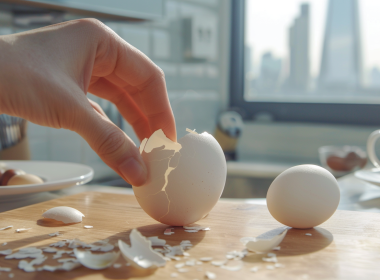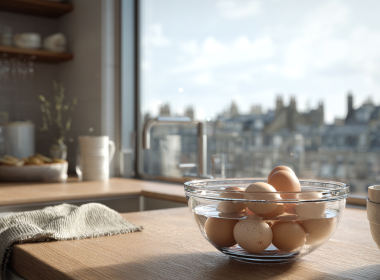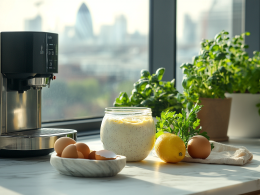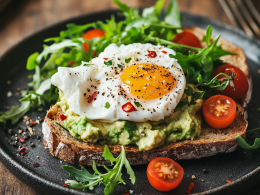Hollandaise sauce is one of the five mother sauces of French cuisine, known for its rich, buttery texture and a hint of tangy lemon flavor. It’s a staple in classic dishes like Eggs Benedict, asparagus, and grilled fish. While many people think making Hollandaise sauce at home is difficult, with the right technique and a little patience, you can create a smooth and velvety sauce that rivals any fine-dining restaurant.
In this guide, we’ll walk you through the step-by-step process of making Hollandaise sauce at home, including expert tips to prevent curdling and ensure a perfect consistency.
What Is Hollandaise Sauce?
Hollandaise sauce is an emulsion of egg yolks, butter, and lemon juice, typically seasoned with salt, cayenne pepper, and sometimes a touch of Dijon mustard. The key to making a successful Hollandaise lies in gently cooking the eggs while whisking constantly to prevent them from scrambling.
Ingredients You’ll Need
Before you start, gather the following ingredients:
- 3 large egg yolks
- 1 cup (2 sticks) unsalted butter, melted
- 1 tablespoon lemon juice (freshly squeezed)
- ½ teaspoon Dijon mustard (optional, for extra depth of flavor)
- A pinch of salt
- A pinch of cayenne pepper or white pepper
Step-by-Step Guide to Making Hollandaise Sauce
Step 1: Prepare a Double Boiler
Since Hollandaise sauce is a delicate emulsion, direct heat can scramble the eggs. To prevent this, use a double boiler or create one by placing a heatproof bowl over a pot of simmering water. The water should not touch the bottom of the bowl.
Step 2: Whisk the Egg Yolks
In your heatproof bowl, whisk together the egg yolks and lemon juice until the mixture becomes pale and slightly thickened. This process helps incorporate air and build the base of the sauce.
Step 3: Gently Heat the Mixture
Place the bowl over the simmering water and continue whisking. The key here is low and slow—keep the heat moderate to avoid cooking the eggs too quickly.
Step 4: Drizzle in the Melted Butter
While continuously whisking, slowly drizzle in the melted butter. Start with just a few drops at a time, ensuring that the butter is fully incorporated before adding more. This gradual process helps create a stable emulsion and prevents the sauce from breaking.
Step 5: Adjust Seasoning and Serve
Once all the butter is incorporated, remove the sauce from the heat. Stir in the salt, cayenne pepper, and Dijon mustard if using. Taste and adjust the seasoning as needed.
Tips for the Perfect Hollandaise Sauce
✅ Use fresh eggs – They provide better texture and stability for the emulsion.
✅ Melt the butter gently – Overheated butter can cause the sauce to separate.
✅ Keep whisking – Continuous movement prevents curdling.
✅ Serve immediately – Hollandaise sauce is best enjoyed fresh, as it can thicken upon cooling.
Common Mistakes and How to Fix Them
❌ Sauce is too thick: Add a teaspoon of warm water or lemon juice and whisk vigorously.
❌ Sauce is too thin: Place it back over gentle heat and whisk until it thickens.
❌ Sauce has curdled: If it starts to look grainy, blend it with a teaspoon of warm water to smooth it out.
Serving Suggestions
Now that you have a rich and creamy Hollandaise sauce, here are some delicious ways to enjoy it:
🍳 Eggs Benedict – Classic poached eggs on an English muffin with Canadian bacon.
🥦 Steamed Vegetables – Drizzle over asparagus, broccoli, or artichokes.
🐟 Grilled Fish – Pairs beautifully with salmon, trout, or halibut.
🥔 Roasted Potatoes – Elevate crispy potatoes with a velvety sauce.
Mastering Hollandaise sauce at home is a rewarding experience that takes your cooking skills to the next level. By following these steps and tips, you can create a restaurant-quality sauce that enhances a variety of dishes. Enjoy!










